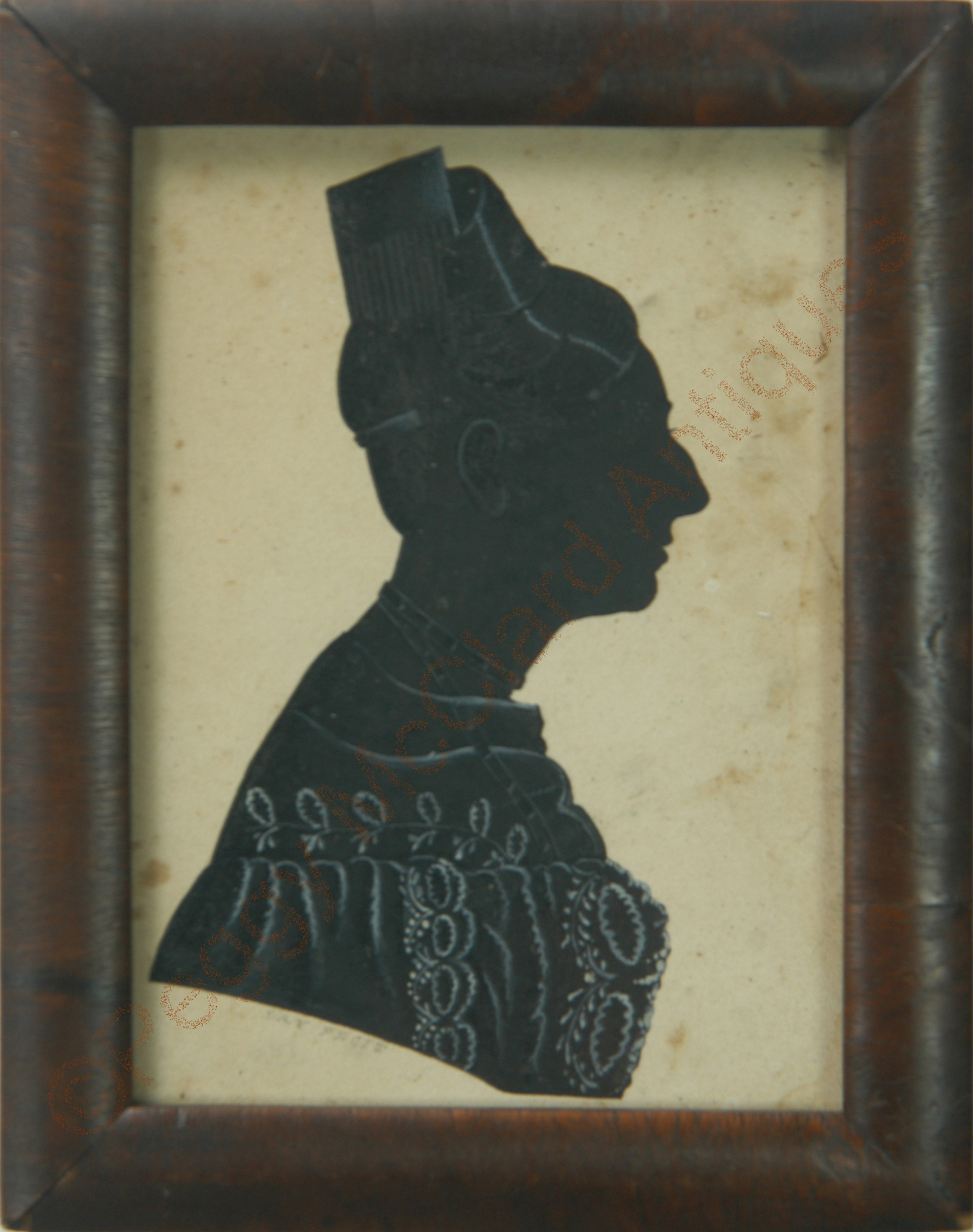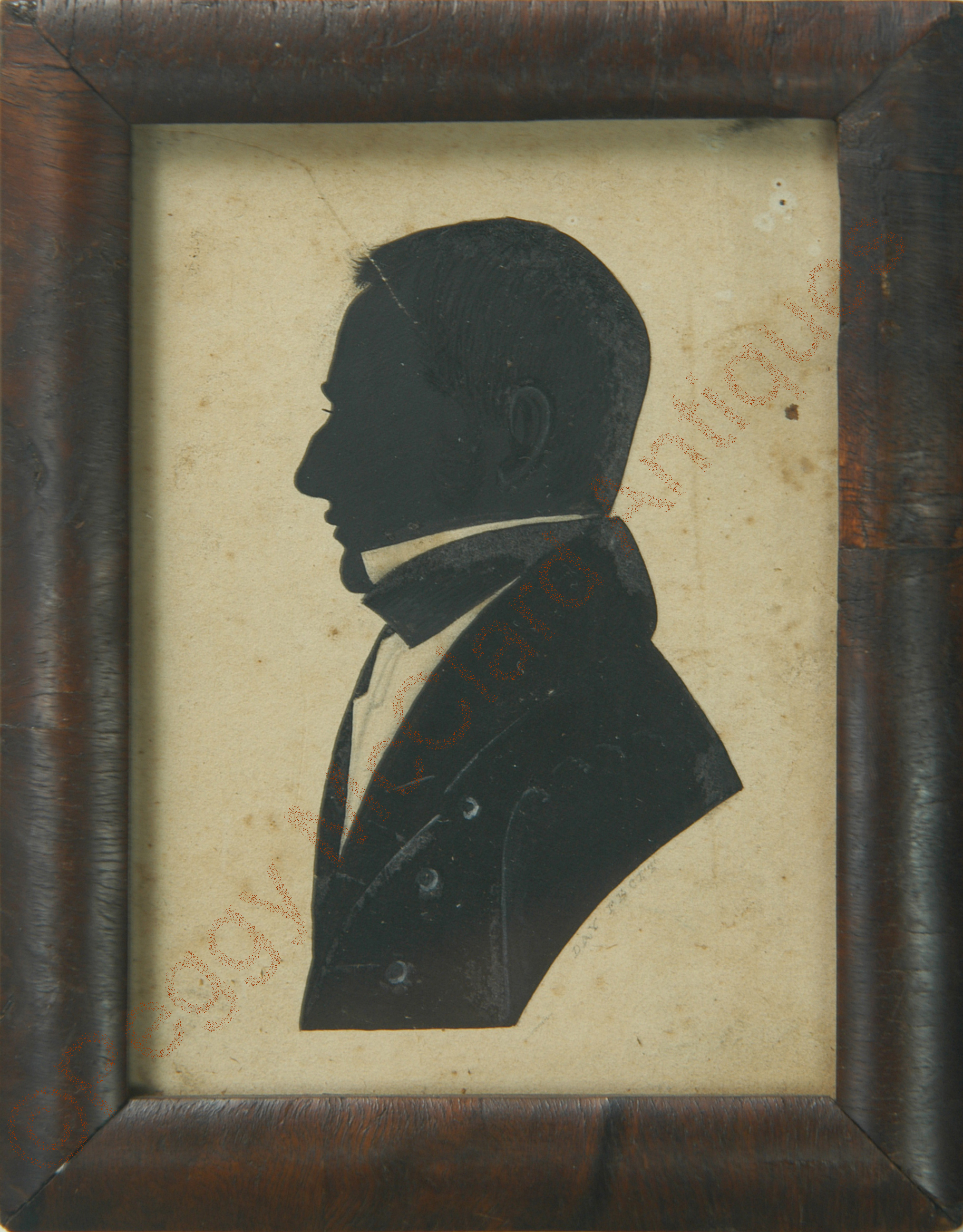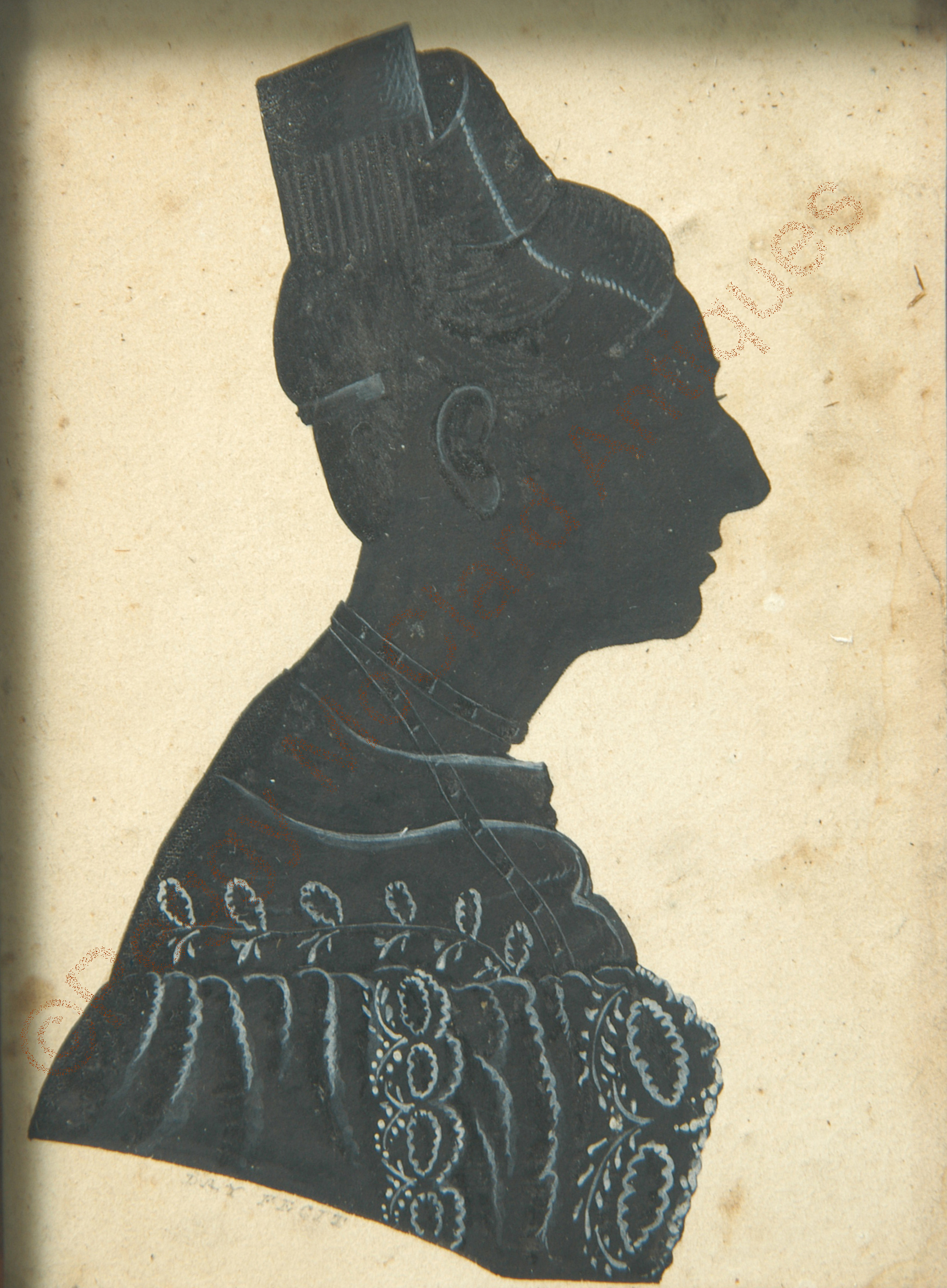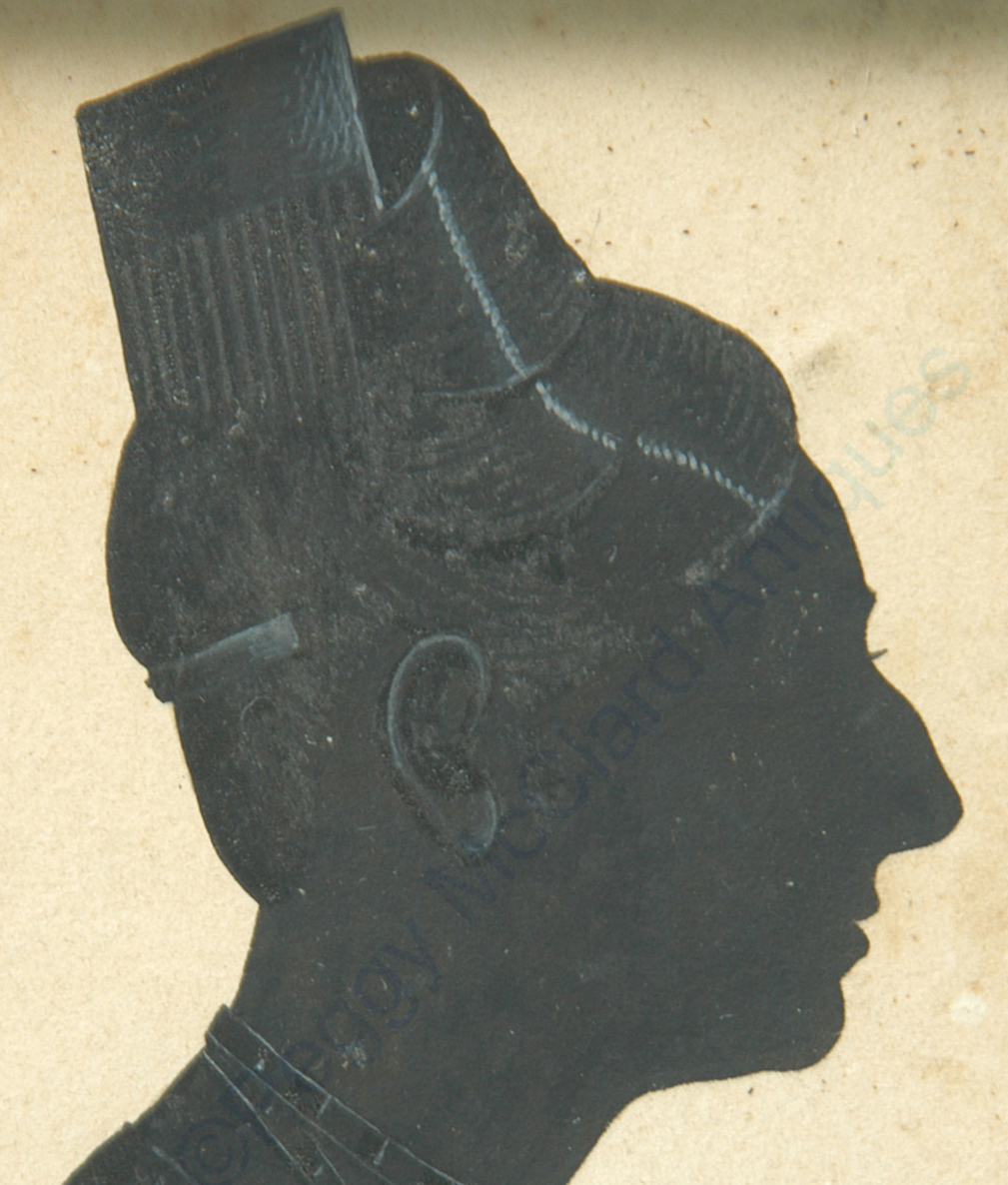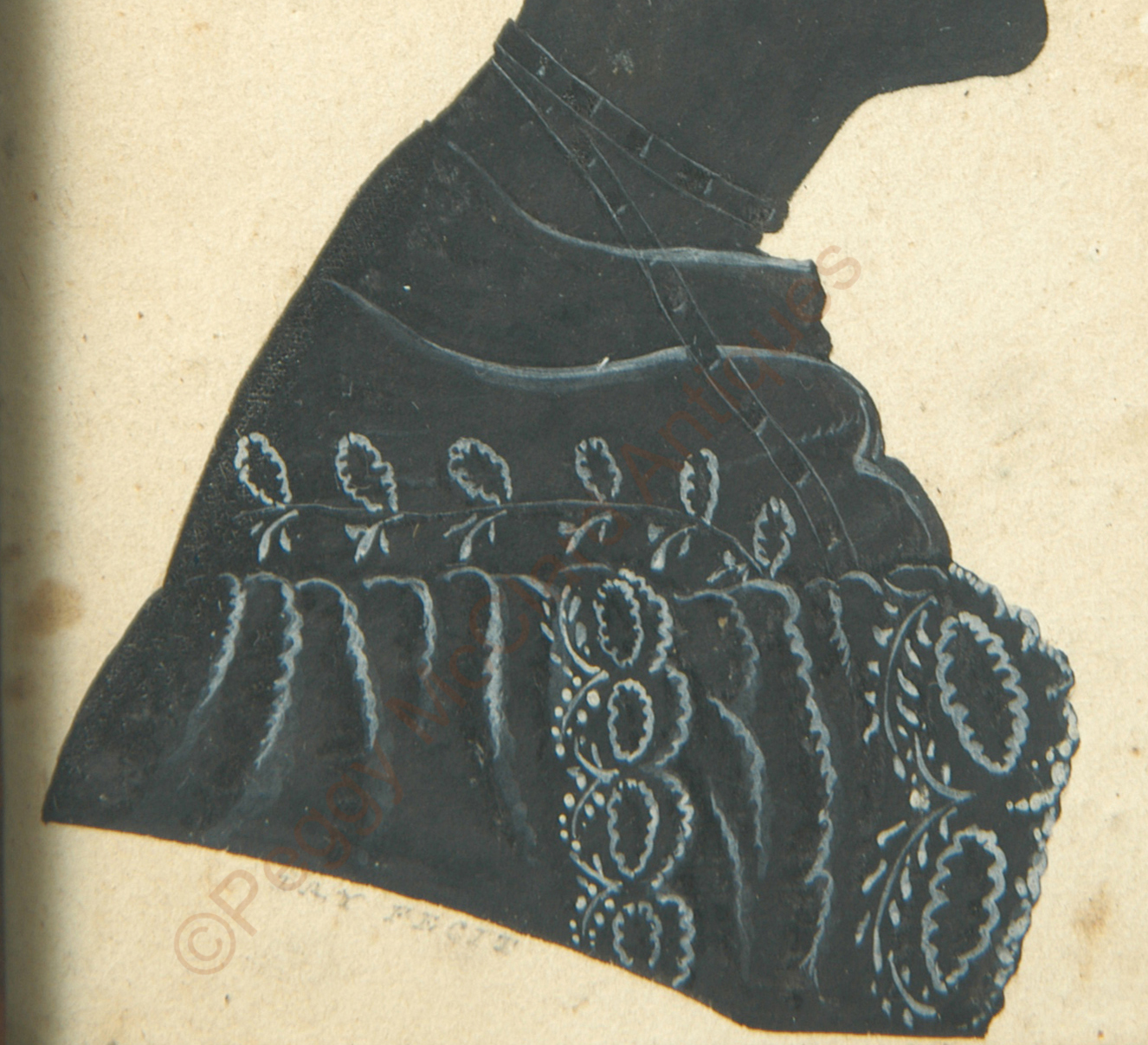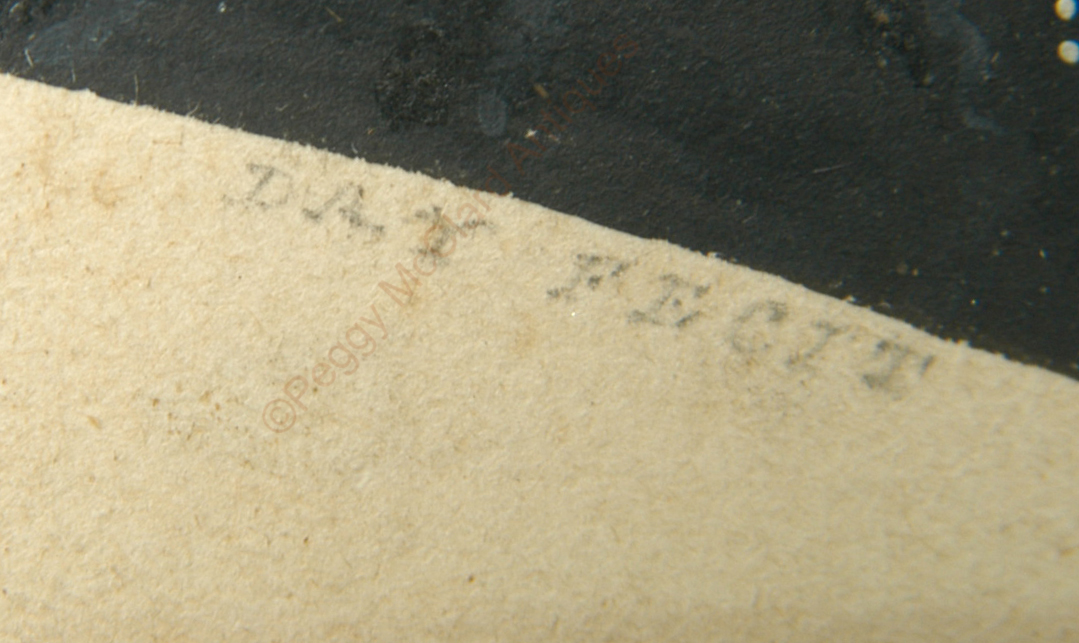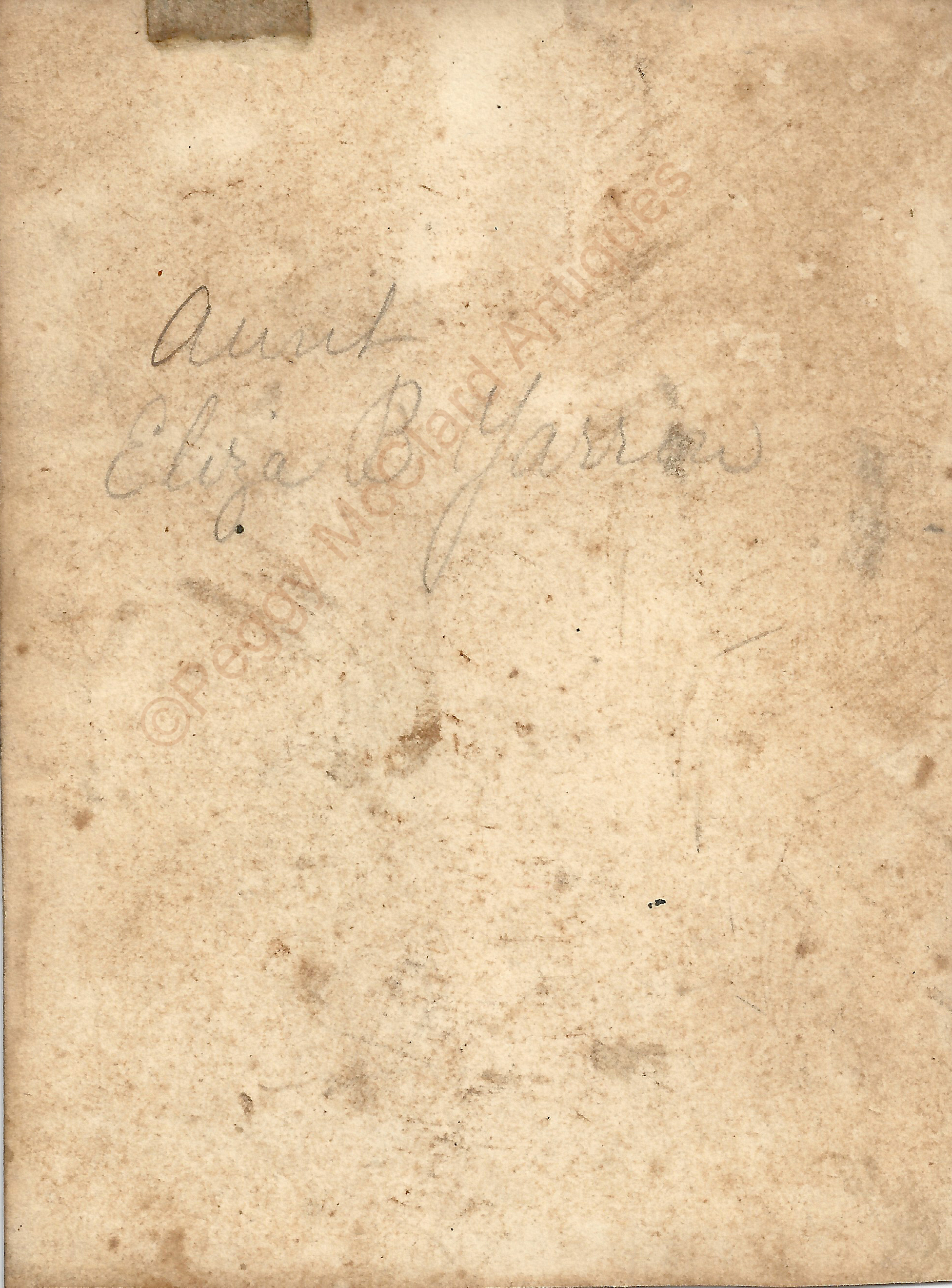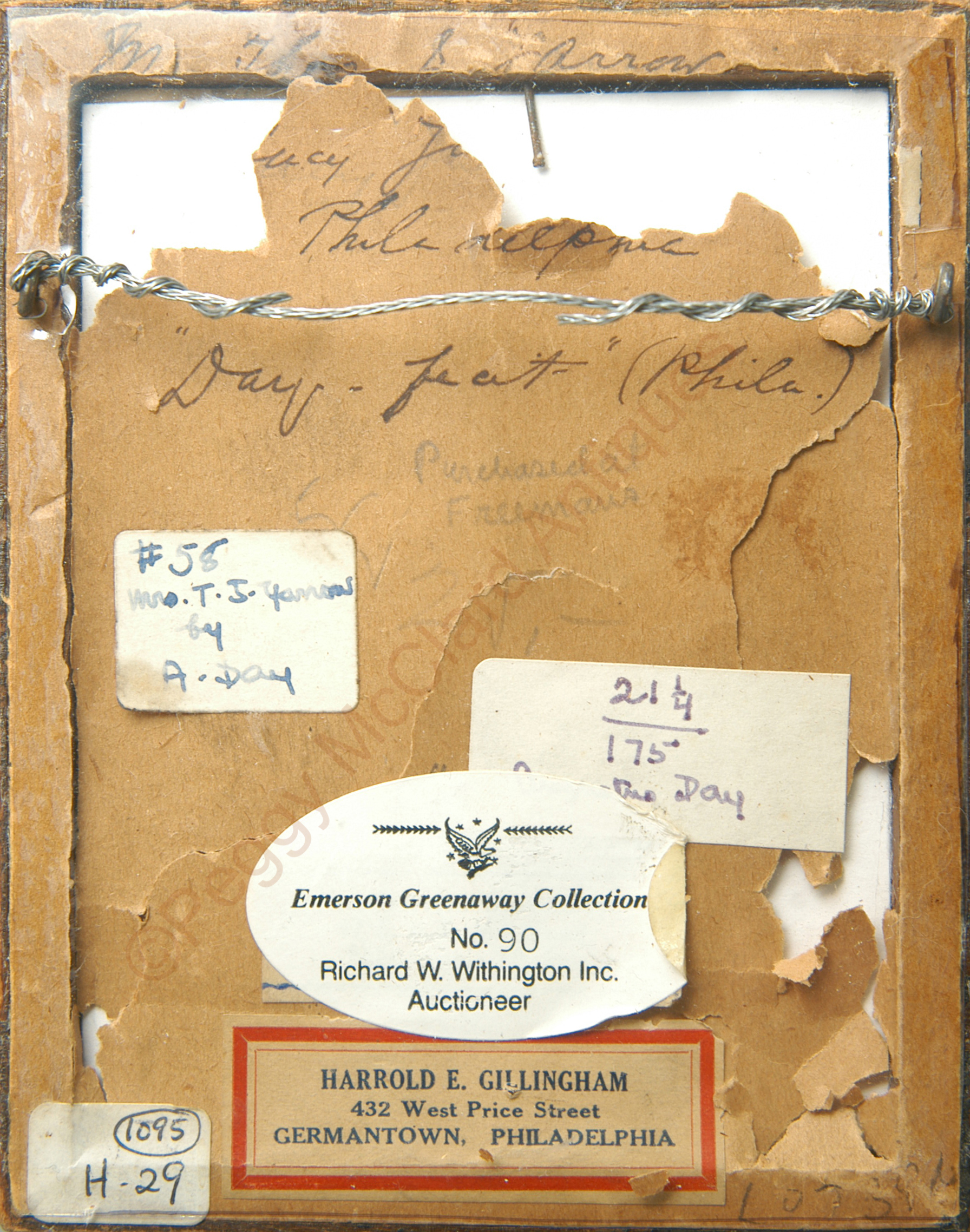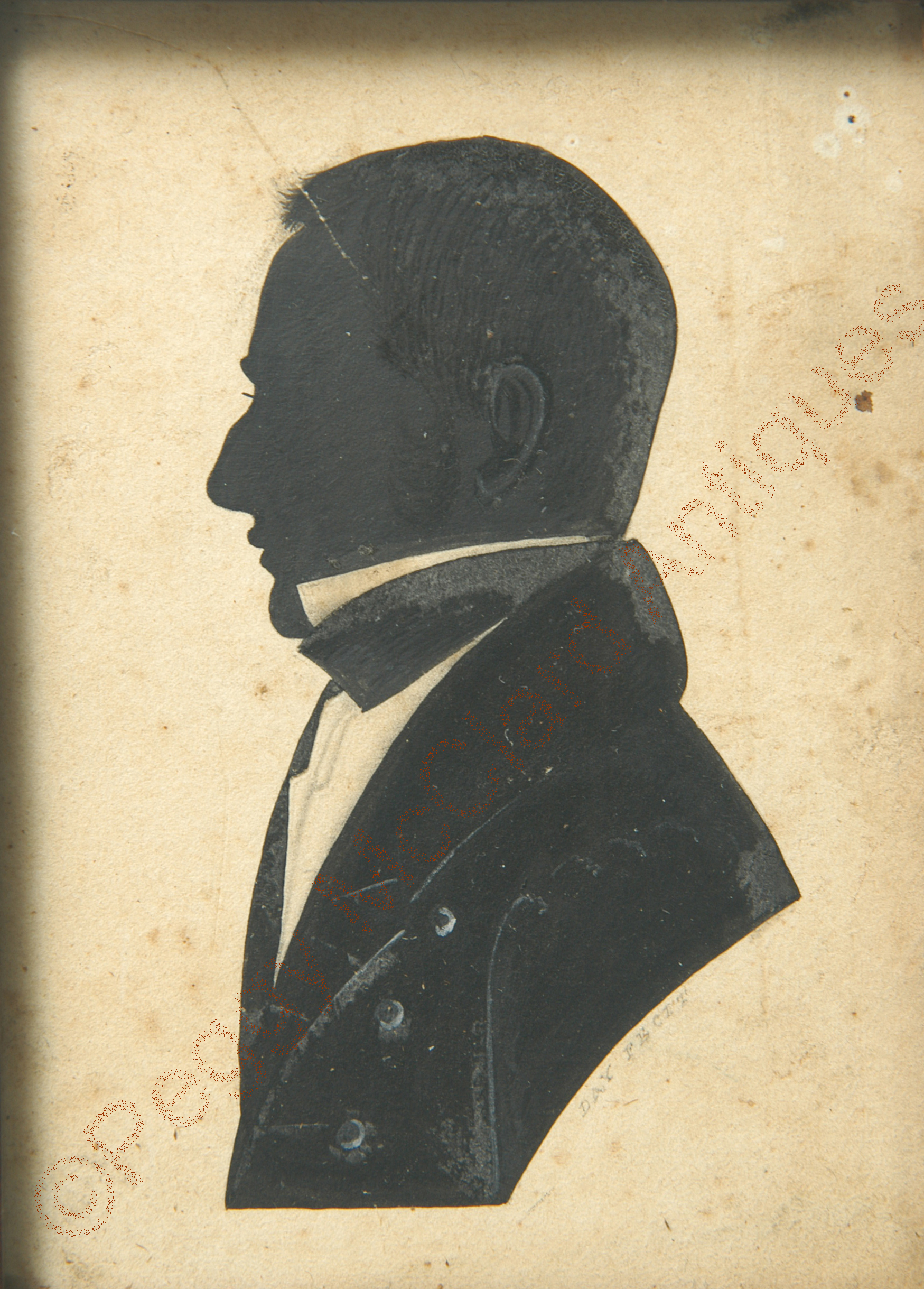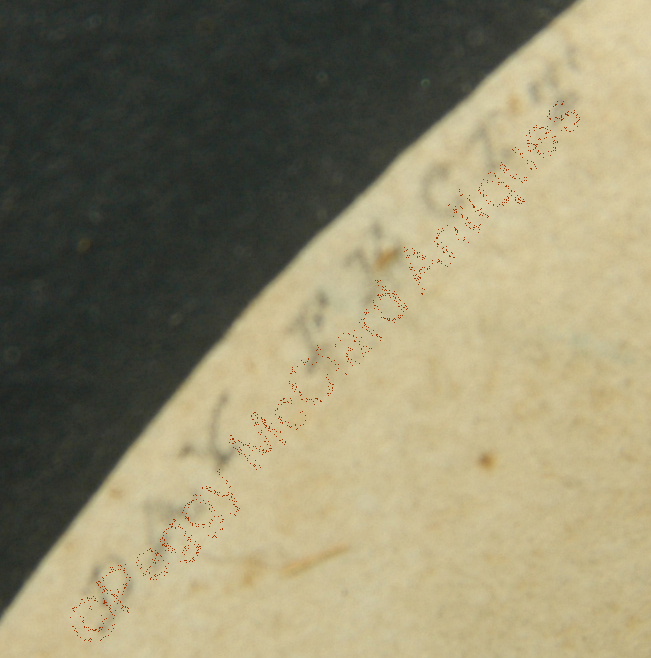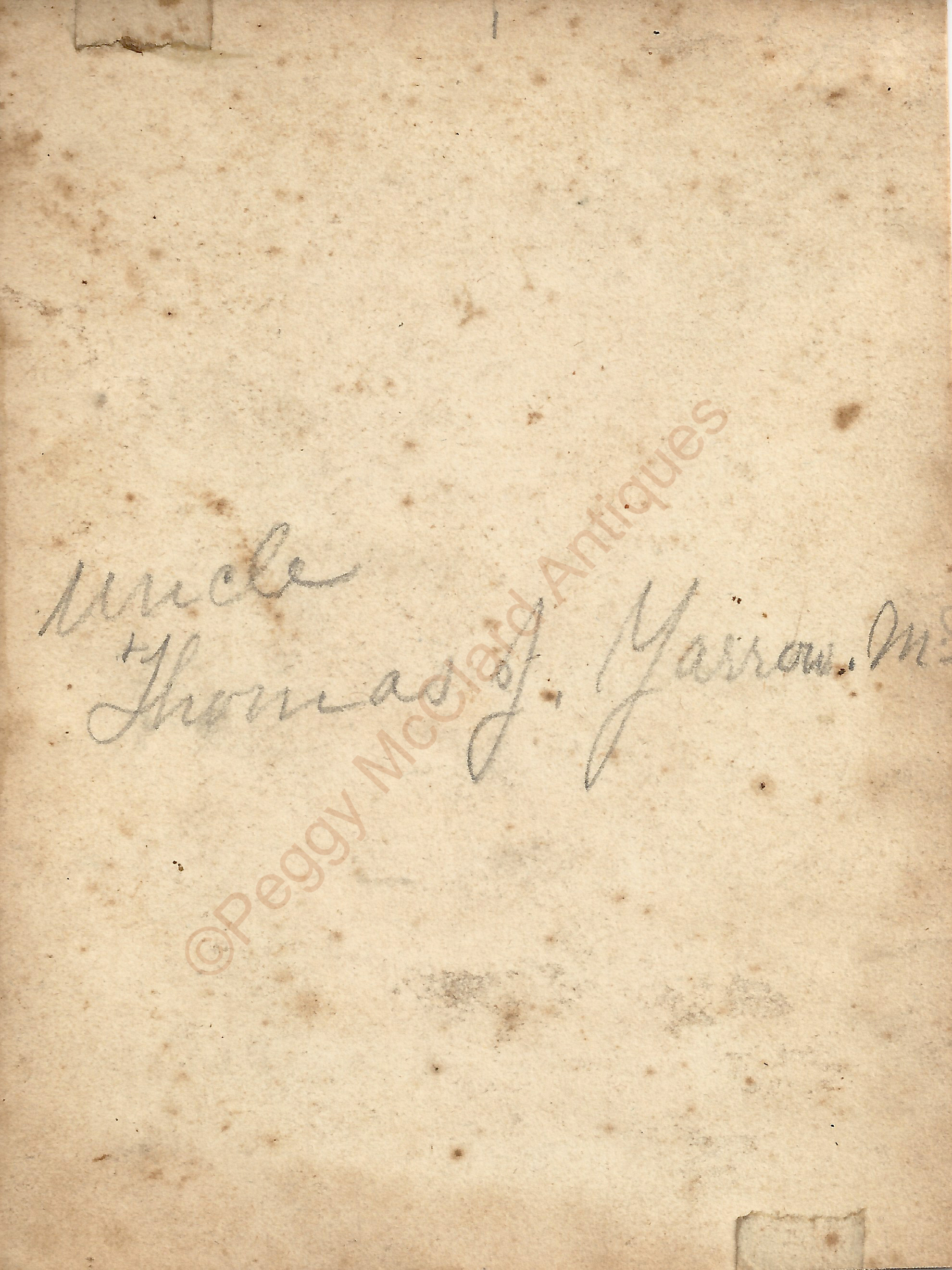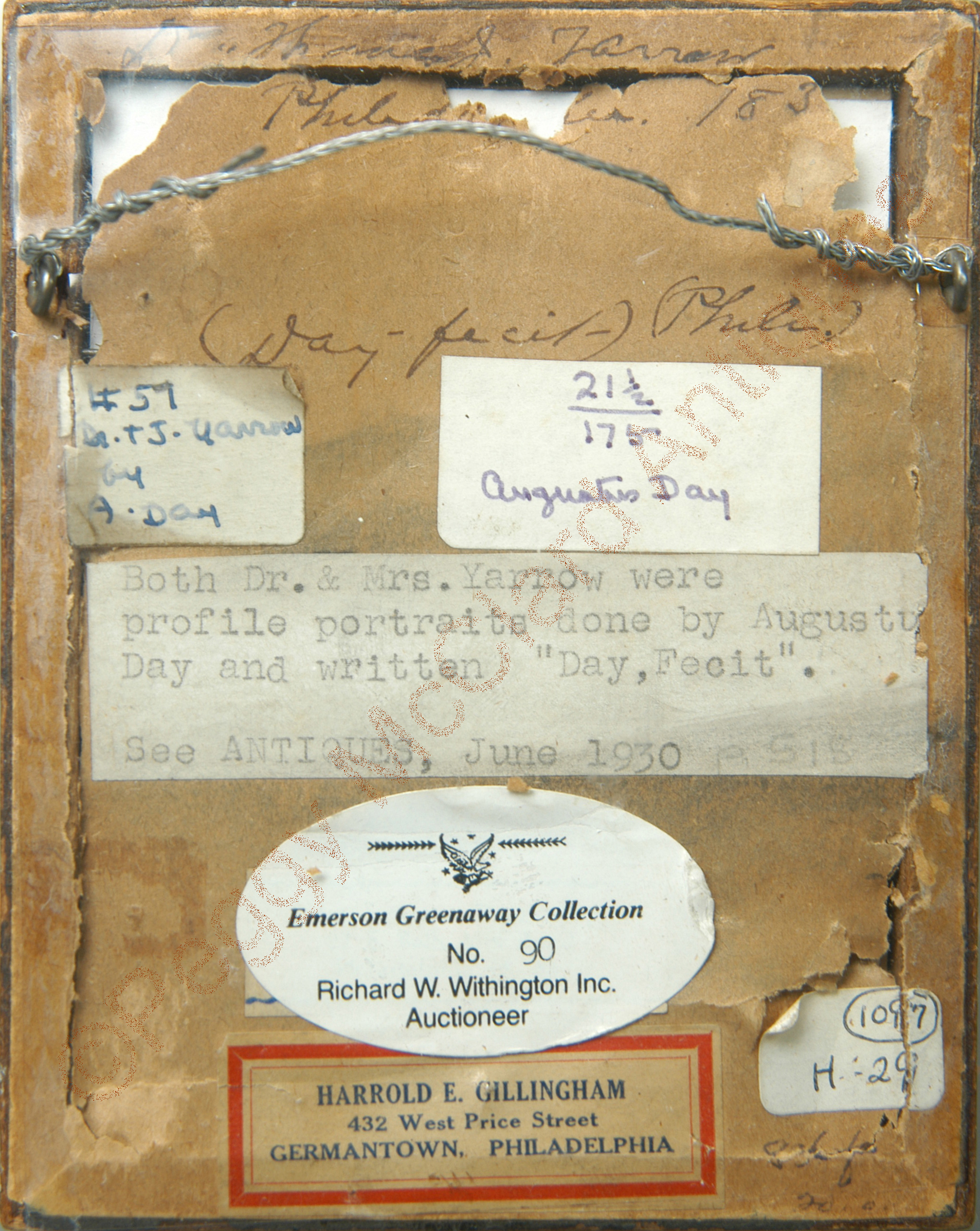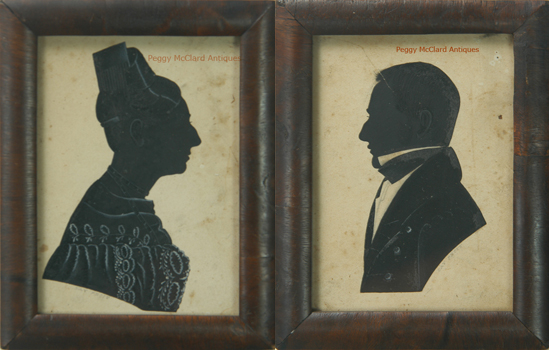
Augustus Day (active 1800-at least 1845) was a carver, gilder, portraitist and silhouettist. He advertised as a physiognotrace profilist in Charleston, South Carolina in 1804. Most of his work seems to have been done in Philadelphia where he advertised as carver and gilder (1800-1806, 1814-1821), looking glass maker (1823-1825), and painter (1829-1833). His hollow cut silhouettes are impressed with a stamped signature "DAY'S PATENT" and his painted silhouettes and full-color watercolor profiles were hand signed "Day Fecit". His very desirable painted silhouettes were either black with soft painted hair tendrils and frilled ladies' collars painted with a soft grey-blue tone; or the more desirable (and extremely rare) olive-green and elaborately gilt embellished. His hollow cut silhouettes are more scarcely found than his painted profiles and, indeed, are some of the rarest of signed American silhouettes.
This pair is a wonderful example of Day's black painted silhouettes with soft grey-blue painted embellishments. The woman displays the strength of Day's painted silhouettes: elaborate lace details and hairstyles. Her hair is pulled to the top of her head in a tall Apollo knot and the very tall hair comb shows great detail. Day painted her hair so that you can see how it winds around her hair and the Apollo knot. He painted texture to the hair comb. A large barrette holds the hair at the back of her head in place under her hair comb. She wears a long, flat necklace that winds once around her neck and falls into the bustline of her dress which sits upon a tucker. The lace tucker fits neatly into the top of her dress with such low-set, wide puffed sleeves that you can't even see where the sleeve ends and the bodice begins. The draped fabric and the laces used throughout her tucker and dress are exquisitely detailed, all in classic Day fashion. The man wears his hair short-cropped and combed towards his face. One can barely see that he wears long side-burns. His black stock is fastened at the back of his neck. His collar of his double-breasted coat is high, deep and rounded, the lapel shows a deep notch and two button holes. The coat sleeves show some padding and his waistcoat is simple and the lapel very short. Both silhouettes are hand-signed "DAY FECIT" directly under the bust-line termination.
The back of each silhouette has a later pencil inscription: The woman's inscription says "Aunt Eliz B. Yarrow" and the man's "Uncle Thomas J. Yarrow M.D.". The back of the period (possibly original) veneer frames has a brown backing paper with a number of collection tags, identification tags, and ink inscriptions. The very top of the paper backings (where still glued to the frames) say "Mrs. Thos J Yarrow" and "Dr. Thomas Yarrow". The backing paper directly below had been cut away before I acquired the silhouettes and has some losses. However, what is still legible says "___ucy Ya___ Philadelphia 'Day - fecit.' (Phila.)" and "Philadelphia 183_ (Day - fecit) (Phila.)". Before I discuss the labels further, let me address the identification. Thomas Yarrow was the name of three generations of medical doctors. Dr. Thomas Jefferson Yarrow Sr. was born in New Jersey in 1810, married Jane R. Dowdney in 1833. Dr. Yarrow senior died in New Jersey in 1882, still listed as a physician. The only information I have found about his father, Thomas Yarrow, is that he was born in England and was also a physician. Thomas Jefferson Yarrow, Jr. was born in Alloway, New Jersey in 1840. He received his medical degree from the Medical Department of the University of Pennsylvania in 1861, after which he went into partnership with his father. In 1862, he joined the army as Assistant Surgeon. During his 2 1/2 years as an army surgeon, he practiced at the Army of the Potomac, the hospital of Philadelphia and the Department of the Army. Dr. Yarrow Jr. left the army in 1864 and moved to Philadelphia with his wife of one year, Matilda Craige. Dr. Yarrow Jr. remained a very respected and often cited surgeon in Philadelphia until his death in 1903.
Considering the age of the couple depicted in this pair of silhouettes and the dates during which Day worked, I believe this pair are Dr. Yarrow Sr. and his wife Jane. These may have been their wedding profiles and they may well have been painted in Philadelphia, although we do not have a complete record of where Day worked so they may also have been painted in New Jersey. It is extremely common for family histories to be incorrect with regard to names, dates, and places. Remember, family histories are generally passed down verbally for decades, if not centuries before anyone writes them down. By the time the history has been passed from generation to generation, one should expect some changes to have taken place. All genealogical research will be provided to the buyer.
Now, back to the labels--Each silhouette is backed with a collection label of Emerson Greenaway. Emerson Greenaway (1906–1990) was an American librarian of considerable note, particularly during the Cold War era of the 1950s. During his long career, he acted as the director of the Enoch Pratt Free Library of Baltimore, the director of the Free Library of Philadelphia and as a director of the American Library Association. He was also a highly respected scholar and an advocate for intellectual freedom in wartime. Greenaway also came under fire for his participation in anti-communist government committees. In 1999, American Libraries named Greenaway as one of the one hundred most important library figures of the 20th century. Mr. & Mrs. Greenaway were avid collectors and known for having fine collections of silhouettes, New Hampshire glass, American antique furniture, pressed ferns of the Northeast, New Hampshire imprints, and American children's books. They donated their collection of children's books to the Free Library of Philadelphia where it was incorporated into the institutions collection of pre-1850 American children's books.
An earlier collection label is from the Harrold E. Gillingham collection. Gillingham (1864-1954) was a Philadelphia insurance broker and an avid Americana collector. His estate gifted his document collection of 1730-1950 materials on early American crafts, instruments and numismatics to the Pennsylvania Historical Society. He published scholarly books and articles about Indian trade silver, Philadelphia instrument makers, early Philadelphia brick-makers and other areas of collecting. It is only natural that, upon his death, some of his collection would have found its way to Emerson Greenaway. In 1930, The Magazine Antiques published Gillingham’s article “Notes on Philadelphia Profilists”. This pair of silhouettes illustrates that article.
Other collection labels are not specific as to the collector. Written in pencil on the backing paper of the woman's frame is "Purchased at Freemans". I have but archival ragboard behind the silhouettes, carefully put the backing paper back into place and preserved it by gluing (with archival glue) a sheet of mylar over the back. As you can see in the images, there is some staining to the silhouettes and Dr. Yarrow has a scratch on the paper and the top of his head that extends from the top edge of the paper at about 11 o'clock to his temple. The half-round veneer frames measure 3 1/4" x 4 3/8".
#6449 Sale Pending
Published:
Gillingham, Harrold E., "Notes of Philadelphia Profilists", The Magazine Antiques, June, 1930. 516-518.
Provenance:
Collection of the late Dr. Carroll R. Ball, Jackson, MS.
Collection of Emerson Greenaway,
Collection of Harrold E. Gillingham, Philadelphia, PA.
Please see the Silhouettist Bios page for more information about Augustus Day.

